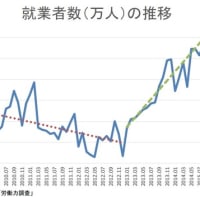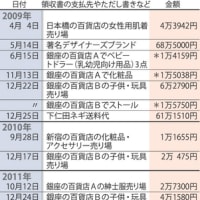“polypill(ポリピル)”と呼ばれる安価な合剤の1日1回投与により、使用者の心疾患や脳卒中のオッズが半減することが、新しい国際研究で示された。この合剤は、2つの降圧薬(ACE阻害薬[リシノプリル10mg]、利尿薬[ヒドロクロロチアジド12.5mg])とアスピリン75mg、スタチン(シンバスタチン20mg)の4剤を含み、これらすべての心臓保護薬を服用しやすくデザインしたもの。
今回の研究は、オーストラリア、ブラジル、ニュージーランド、英国の公衆衛生当局の資金提供を受けて、オーストラリア、ジョージ国際保健研究所(シドニー)グローバルヘルス教授のAnthony Rodgers氏らが実施。インドを拠点とする製薬会社ドクターレディズ・ラボラトリーズDr. Reddy's Laboratoriesは同薬を提供したが、資金は提供していない。
同氏らは、今後5年間で心疾患リスクが中等度に増大すると評価された50~70歳の378人を、polypill投与群またはプラセボ投与群に無作為に割り付けた。被験者は英国、オーストラリア、ブラジル、インド、ニュージーランド、オランダ、米国出身者であった。
研究の結果、12週間で、polypill群の収縮期血圧(最大血圧)は平均9.9mmHg低下した。LDL(低リポ蛋白)コレステロールはプラセボ群と比べて、平均0.8mmol/L(約31mg/dL)低下し、Rodgers氏によれば「これは“有意”であり、この改善により心血管リスクが半減すると推定される」という。ただし、polypill群の6人中約1人に副作用が認められ、20人中約1人はそのために服用を中止した。この割合は同薬に関する以前の研究よりも高かった。
Rodgers氏は「この分野では、個別の投薬よりも全体的なリスクに対応することが重要であることがわかっており、この錠剤はそのパラダイムの変化の一部である。また、1日1錠であるため、複数の錠剤に比べて服薬遵守(コンプライアンス)も改善するはずである」と述べる一方で、全体としてpolypillのベネフィット(便益)は有意であったが他の研究で示唆されているほど大きくなく、副作用も考えられていたほど少なくはなかったと指摘。この知見を踏まえて、同氏らは「主に心疾患または脳卒中のリスクがある人に同薬を使用すべきである」としている。
別の専門家は「polypillに用いられる個々の薬剤はジェネリック薬であり、1つの錠剤になればさらに安価になると思われる」と述べている。研究結果は、オンライン科学誌「PLoS One」に5月25日掲載された。
Daily Four-Drug Combo Pill Halves Heart Disease Risk: Study
Low cost, better adherence are pluses, but side effects could be problem, experts say
By Steven Reinberg
HealthDay Reporter 
WEDNESDAY, May 25 (HealthDay News) -- A cheap, once-daily, four-drugs-in-one medication, dubbed a "polypill," appears to cut users' odds for heart disease and stroke by 50 percent, a new international study finds.
The pill combines two blood pressure-lowering medications with aspirin and a cholesterol-lowering statin and is designed to make all these heart-protecting drugs easy to take, researchers say. That, along with its expected cheap cost, might improve compliance with medication regimens, experts suggest.
"We think the role for the polypill is among those at risk of heart disease, in preventing heart attacks and strokes," said lead researcher Dr. Anthony Rodgers, a professor of global health at The George Institute in Sydney, Australia.
The study was funded by public health agencies in Australia, Brazil, New Zealand and the United Kingdom. India-based drug maker Dr. Reddy's Laboratories supplied the pill but did not play a role in funding.
Rodgers stressed that there are still unanswered questions about the pros and cons of using this type of combination pill versus prescribing several pills, where doses and medications are tailored to individual patients. A trial is ongoing to look at that question, he said.
However, tailoring medications in this area is not as important as it once seemed, Rodgers believes. "We realize now the importance of treating the overall risk. And this [pill] is part of that paradigm shift," he said. He noted that the polypill will probably not ever replace the use of individual pills for every patient. "There will always be patients who do better on individually dosed medicines," he added.
The report was published in the May 25 online edition of the journal PLoS One.
In addition to 75 milligrams of aspirin, the polypill contains 10 milligrams of the blood pressure-lowering drug Prinzide (lisinopril), 12.5 milligrams of the blood pressure drug hydrochlorothiazide (a diuretic) and 20 milligrams of the cholesterol-lowering statin Zocor (simvastatin).
The new study included 378 people, typically between the ages of 50 and 70 and assessed to be at a moderately heightened risk for heart disease over the next five years. The participants, who were randomly assigned to receive the polypill or a placebo, came from the United Kingdom, Australia, Brazil, India, New Zealand, the Netherlands and the United States.
Over 12 weeks, people taking the polypill saw an average reduction in their systolic blood pressure (the top number in a reading) of 9.9 mmHg, and what Rodgers called a "significant" 0.8 mmol/L average reduction in their LDL "bad" cholesterol, compared with those receiving placebo. Improvements such as these added up to an estimated halving of cardiovascular risk, the team said.
However, about one in every six people taking the polypill experienced some sort of side effect, the team added. In fact, about one in every 20 users quit the drug because of this, a higher rate than had been seen in prior studies involving the polypill.
Overall, the benefits of the polypill, while significant, were not as large as others have suggested, Rodgers said, and side effects were not as limited as had been thought. Given that finding, Rodgers' group thinks the polypill should be given primarily to those at risk for heart disease or stroke.
Another expert agreed that the study offered up good news and bad.
"There were significant reductions in blood pressure and lipid [blood fat] levels," said Dr. Gregg C. Fonarow, a professor of cardiology at the University of California, Los Angeles. "However, the polypill was less well-tolerated than expected."
Still, he said there's been longstanding interest in developing a single pill with fixed-dose combinations of heart-protective medications, especially for use by people in the developing world who may have limited access to health care, and where low cost is a priority.
"Each of the individual components employed in the polypill are generic medications and available in the U.S. for $40 a year each -- that's $160 for a year supply for all four medications," Fonarow noted. "If integrated into a single pill the expected cost of such a polypill would be even lower," he said.
According to Rodgers, the polypill is expected to cost even less than that -- about $2 a month in poorer countries. And since it is only one daily pill, compliance should be higher compared to when a patient needs to take several pills per day.
According to the report, this polypill will be available in India soon and elsewhere within a few years. Around the world, about 80 percent of all deaths from heart disease, stroke and diabetes happen in low- or middle-income countries, the researchers noted.
More information
For more information on cardiovascular disease, visit the American Heart Association.
SOURCES: Gregg C. Fonarow, M.D., professor, cardiology, University of California, Los Angeles; Anthony Rodgers, M.D., professor of global health, The George Institute, Sydney, Australia; May 25, 2011, PLoS One, online
Last Updated: May 25, 2011
Copyright © 2011 HealthDay. All rights reserved.




















※コメント投稿者のブログIDはブログ作成者のみに通知されます